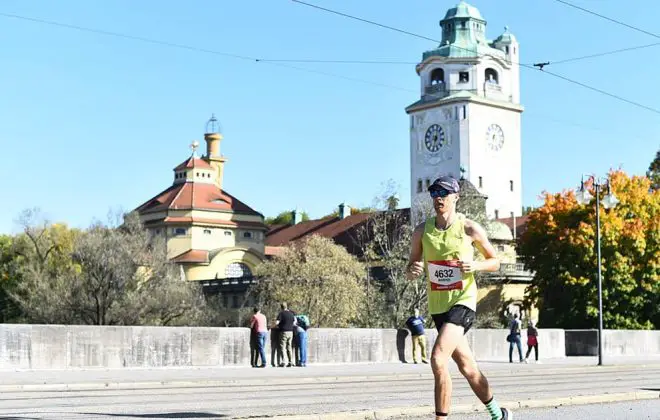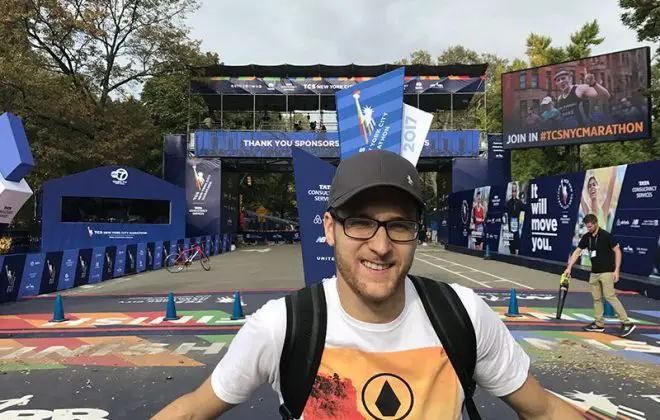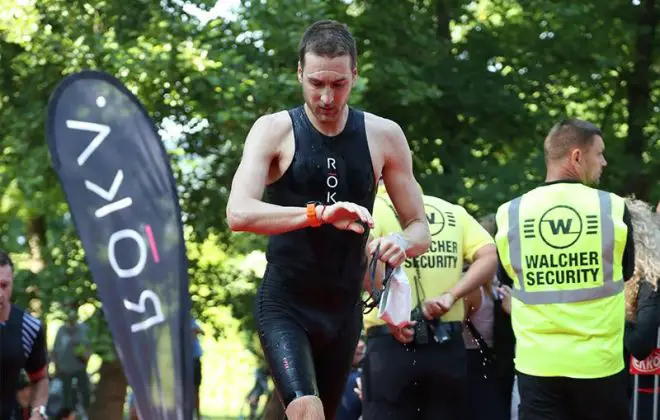Riga Half Marathon – Hooked On Running After First Long-Distance Race
Riga Half Marathon was my first long-distance running race and I loved every part of that experience. Looking back at it now I can say that it not only was a great challenge for me, but also changed how I live my life.
I’ll explain.
To be honest, I did run some races before, but never over 30 minutes and never on a properly-measured course. And I never trained explicitly for running.
My motivation for getting into long-distance running
Back in university I trained in kayaking and was very competitive about it. Then, one autumn I decided to take a mini-break and spend a month running. Back then I thought I’ll use the time to mentally relax and will be back in the boat doing one-twos with my paddle in no time.
But little did I know what kind of passion it will spark. In particular, I really loved how liberating it felt getting out the door and running wherever eyes took me. So, I ran in forests, along the beach, in the city – everywhere I could get to.

Things started to change for me when I started to travel more. As I began to switch countries more frequently, I had to give up consistent kayak training. At least the one in the boat – I could still do some training in gyms.
When it comes to traveling, kayaking is a logistical nightmare compared to triathlon. When you’re traveling it’s very impractical to bring the 5-meter-long boat with you (unlike packing a bicycle). On top of that, finding a club where you can ‘drop in’ on a session without contacts in that country/city is like calling to speak with the president. Not likely to happen.
With running there is no such problem. We can do it anywhere and anytime – all we need to go out exploring a new place are shoes & shorts. And the best part that we don’t need to take a training break to stay active on the go. How convenient.
Read also: 12 Ideas How To Stay Fit While Traveling And Enjoy The Process
A new personal challenge
Besides my interest for long-distance running, I always wanted to run a race as well. In my head I always pictured myself completing a marathon – after seeing the New York City marathon on TV – but I never had the opportunity to train for it. Or so I told myself.
I needed a new challenge to keep myself structured, active & healthy. Signing up for a race seemed like a perfect step towards that.
After some considerations and planning I signed up for the Riga Half Marathon. By the time I did it was January and I would have 4 months to train for it. Almost like a New Year’s resolution.
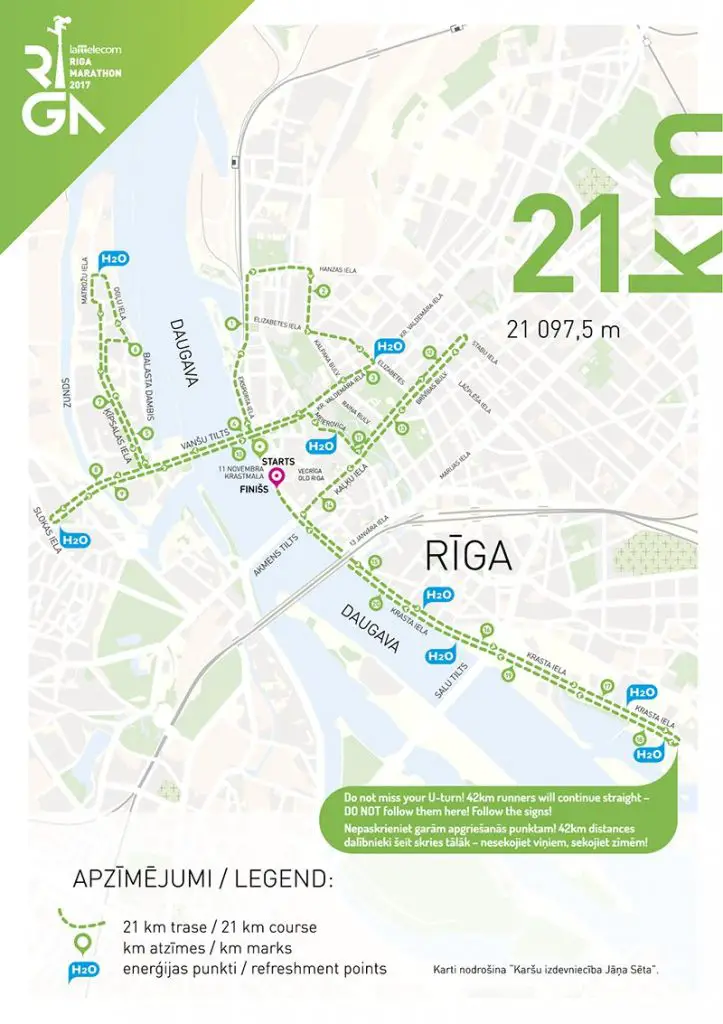
Due to my work commitment, I was living and training in Helsinki just around the time when Riga Half Marathon was taking place. Perfect timing – it was in such close proximity and I’d be running a race in my hometown.
And that’s how I found myself at the start line.
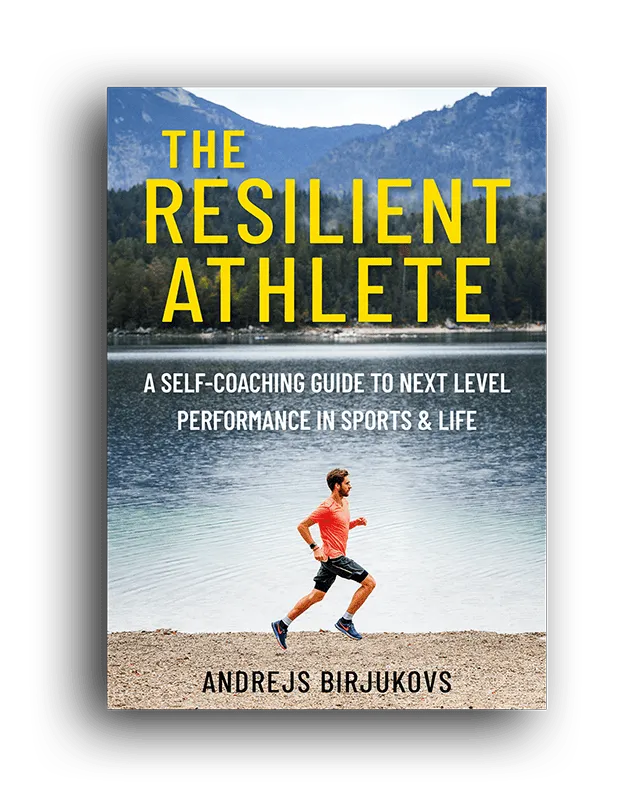
The Resilient Athlete
A Self-Coaching Guide to Next Level Performance in Sports & Life
Are you aiming to become a resilient athlete who is able to withstand any pressure? Be able to jump on any opportunity? Take any challenge life throws at you head on?
Then this book is for you.
Learn moreRiga Half Marathon race report
It took me the whole Thursday afternoon to get from Helsinki to Riga and I arrived around 2am. Probably not the best way to recover before a race, but I somehow was very excited about it. Also, it felt surreal to come to my hometown for just one weekend and having to leave so soon.
I didn’t take holidays from work for this trip and gave myself just 3 days for the whole endeavour.
Thoughts before the start
My main concern before the race was pacing. As I had no experience I couldn’t tell what shape I am in. While I did some race simulation efforts (10K tempo, 16K moderate, 21K easy), I had no idea how long my energy will last.
During race week my legs started to feel fresh. I thought to myself ‘if stars align I might be in 4:10 – 4:15 min/km shape’. Don’t know whether those were my feelings or rather self-motivation. In my head I had a goal of going under 1 hour 30 minutes, because that’s what we made a bet on with my friend. The same friend we did a crazy overnight kayak marathon with, by the way.
The bet itself wasn’t my main motivation, as I anyway wanted to run a race. Instead, it worked just as an additional external accountability to keep me focused.

I tried using various online calculators to predict my time based on some recent efforts. It did help to confirm my expectation about my fitness, but eventually I decided to run by feel. First 2K same as my tempo effort and then use the heart rate of my tempo runs as a guide for the rest of the race.
Start and the first 10K – going strong
The start was great. I managed to get into the front side, just several meters away from the pro field and after the start gun went off I found a clear path along the right side and went for it. All of a sudden I felt the same exhilaration as during any other mass start, only this time I was running and not kayaking.
We did a short 2-3K loop around the ‘Quiet Center’ of Riga, before running up the Vansu bridge. I thought to myself that the name of the district suited it well, as it was indeed very quiet. All I could hear was hundreds of footsteps and some abrupt chit chat.
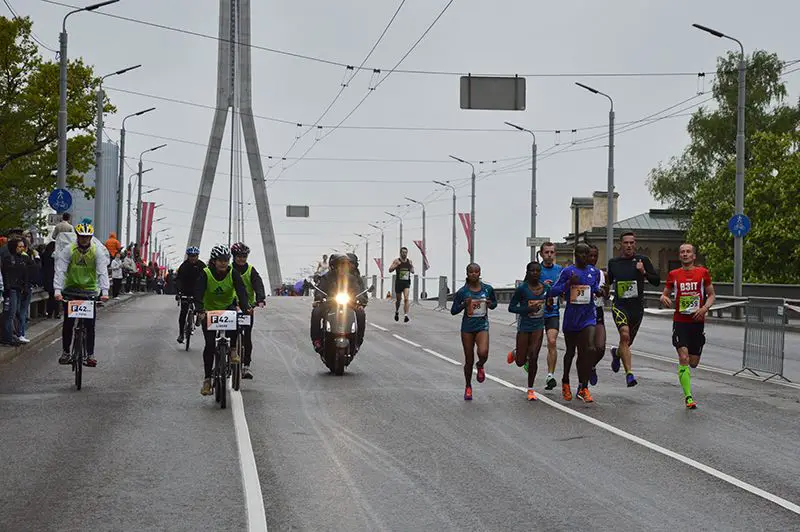
To be honest there were good reasons for this solitude. It was still early (marathon and half marathon starts were at 9am) and a bit rainy.
Running on empty streets felt great and I ran first couple of kilometers at ‘comfortably uncomfortable’ pace. Result – the first two splits at 3:50 and 3:55, after which I slowed down to an average of 4:10.
The next 7K led through the Vansu bridge and Kipsala area where it’s also hard for spectators to get to. However, it wasn’t that bad. It was exciting to run on roads where I only went by car before. Also, I felt strong and enjoyed the experience, even despite the rain.
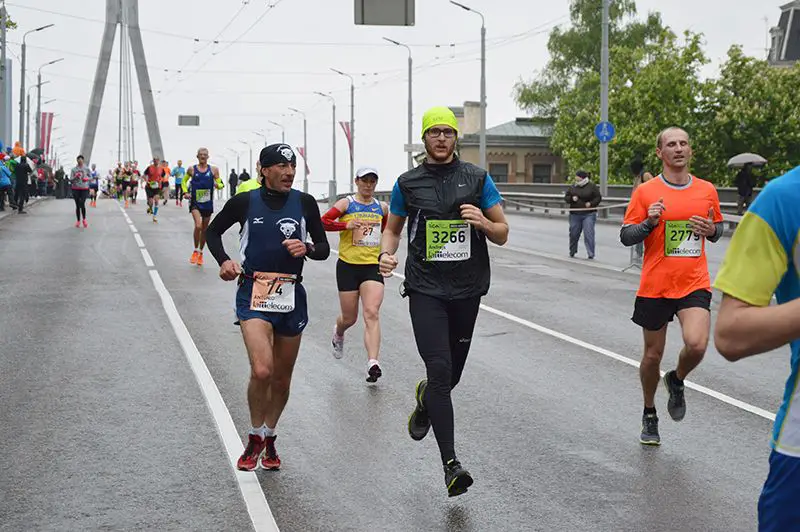
The whole spectator situation changed as we got to the second half of the bridge (which was around the 10K mark).
In training I became used to doing hard tempo runs on a weekly basis. Usually, I’d have energy left after a solid 10K, but I never went further than that. So, at this point of time I was making a leap into the unknown, in a sense.
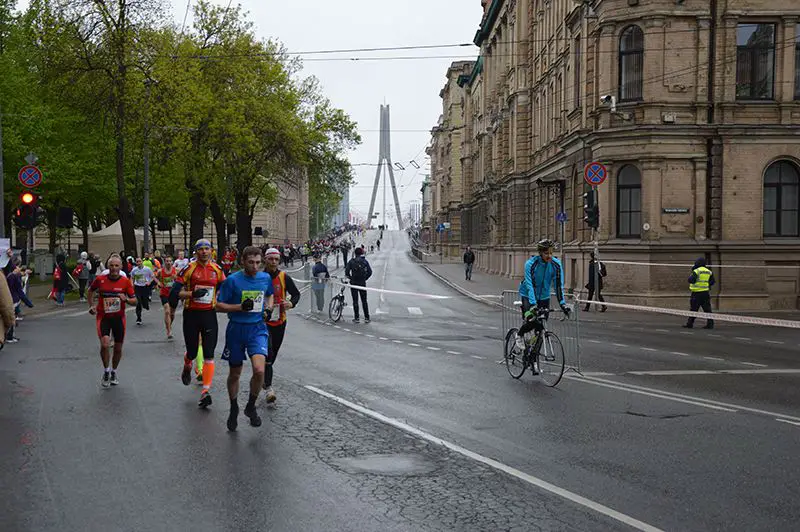
Excited through the second half
The section between 10K and 15K went by pretty fast, even though I expected it to be mentally the hardest part of the race. After all, even though it’s almost halfway, there’s still 10K to go… Nonetheless, there was a lot to see during these 5K through the city center and that helped to take my mind away.
In particular, the section through the Brivibas street and along the Freedom Monument is called the ‘cultural kilometer’. I looked forward to that part the most and it was as exciting as I expected.
In fact, after the turnaround at the far end of the Brivibas street fueled by excitement I unintentionally picked up the pace. The streets were full with spectators and people in national costumes who cheered all runners. And, of course, loud music playing in the background. How can you not be excited about it?
As corny as it sounds, I felt strong & free at that point and enjoyed the moment to the full.
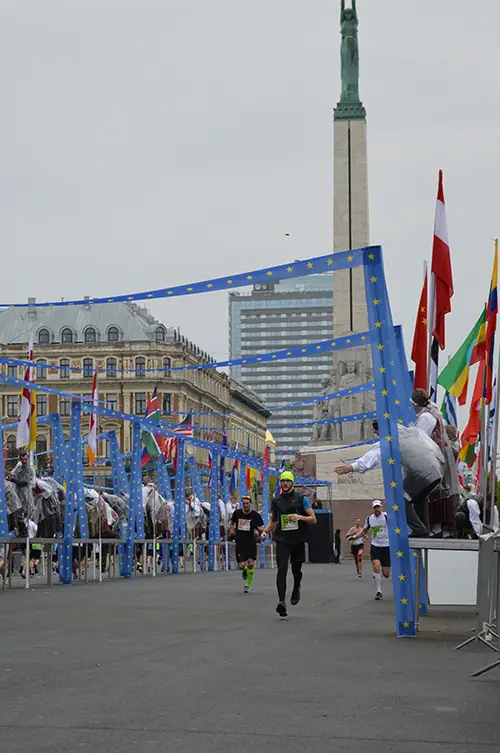
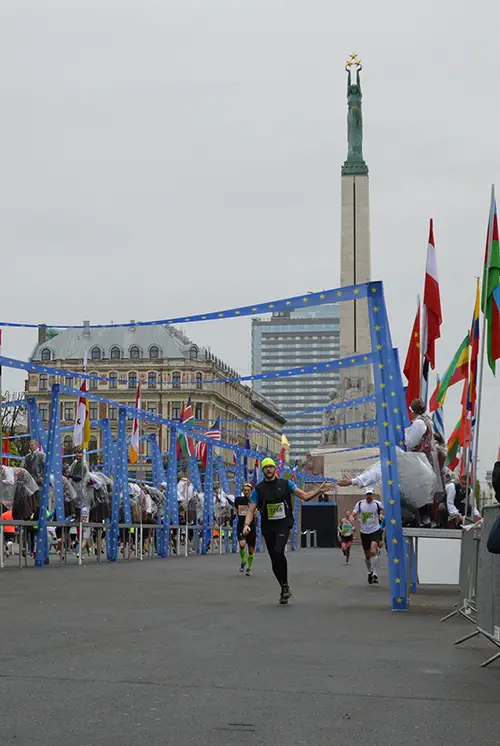
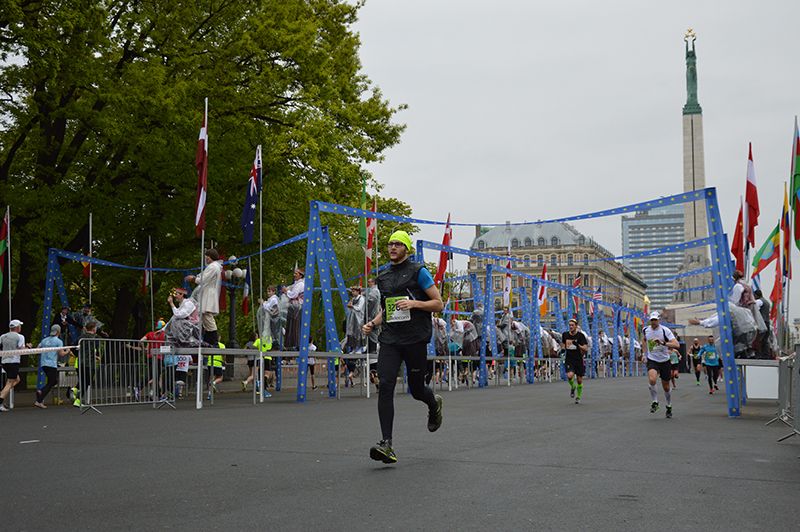
That speeding up probably wasn’t dramatic. However, as I glanced at my watch the heart rate was well in Zone 5. It jumped from 170 to 182 and it was enough to bite me back a little later.
To make things worse, there was a little uphill section through the Old Town. Running uphill on wet cobble stone didn’t help to catch my breath, so soon after I started to feel a little discomfort in the right side.
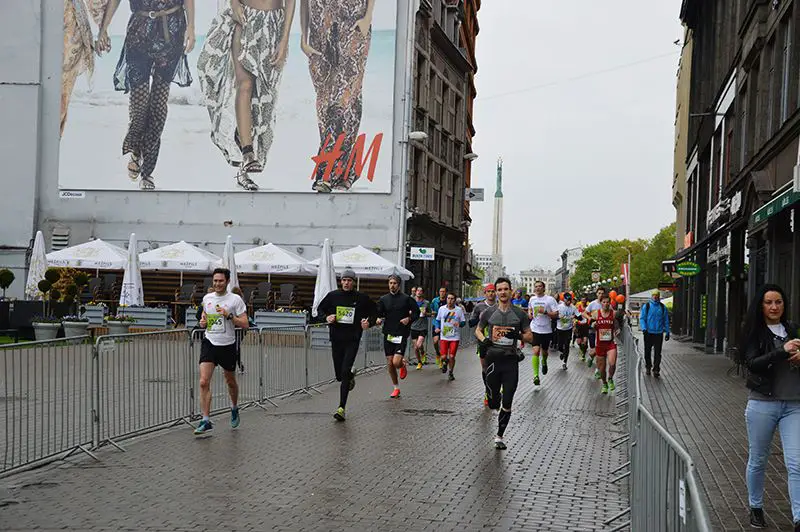
Struggling at the finish
This is where it got hard. From the Old Town the route turned to the promenade and from there only an out-and-back section remained. The problem was that it was almost 5K long and not too exciting visually.
Running out felt forever and, compared to the previous section, kilometers went by very slowly – 16, 17, 18… I also felt my legs getting heavy and the speed slowing down.
Then, after the turnaround I thought ’final stretch – give it all’. While the first couple of minutes felt good, I soon started to feel wheels coming off. Soon I felt so spent that I couldn’t feel my legs moving – I was floating like a noodle in a soup. I didn’t even have the energy left for the final sprint.
I finished in 1:27:58 and remember feeling super pumped about it despite fading in the end. An average pace of 4:10min/km, even though some weeks ago I was not sure I would even hold 4:20. In fact, my first three 5K splits were 20:06, 20:58 and 20:48, so besides starting some 15sec per km faster, I was pacing it well until the last out-and-back section.
My fourth 5K split was 21:44 and I could really feel that was the part where I gave up a lot of time. Even though I seemed to have picked up the pace in the end.
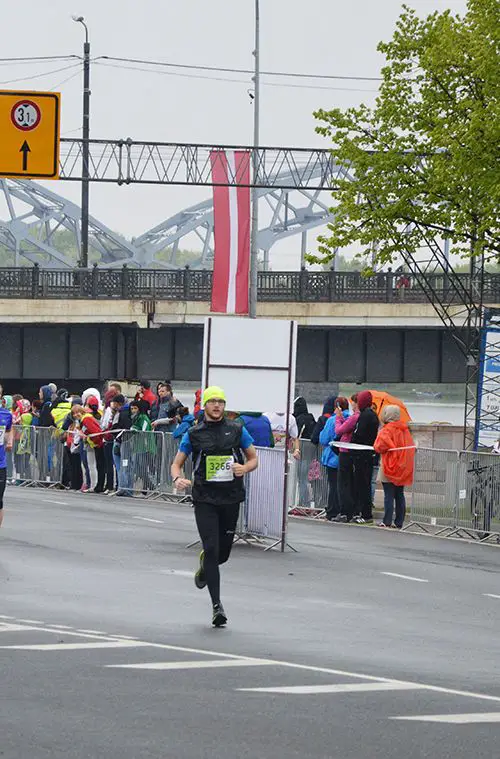
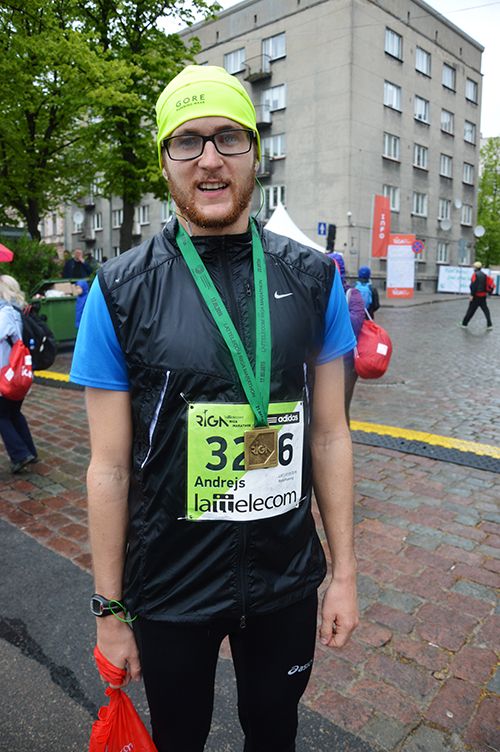
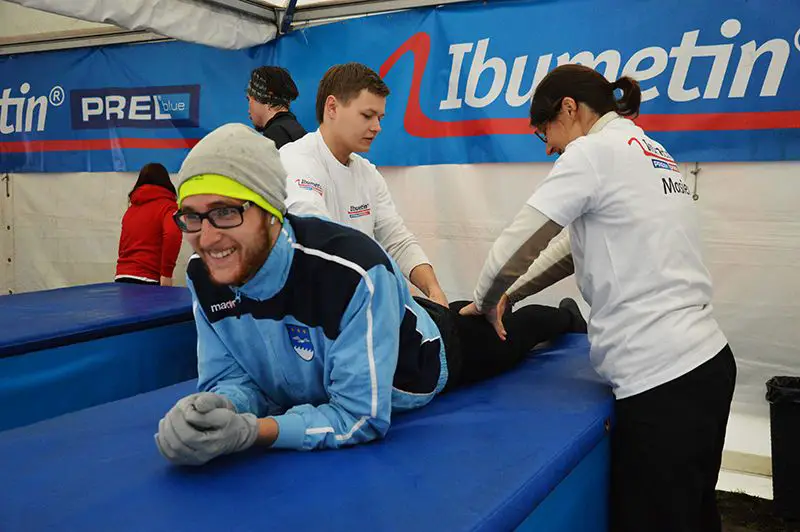
Soon after the finish initial excitement subsided and I started to feel cold – after all, it was a +11 degree day. Those who ran a marathon still had another lap to go and at that point I had no understanding whether that’s physically possible. But I knew I would want to train better to be able to complete a full marathon in the future.
Read also: IRONMAN Austria Race Report – The Story Of My First Ironman Race
The night after Riga Half Marathon
My 3 days in Riga flew by just like the first 10K of the race. I had to return to work in Helsinki the next day, so I had a night of traveling ahead of me.
The evening of the race I took an overnight bus to Tallinn that left at 2am. From there I boarded a ferry to Helsinki and was at the office just after 10am. It was probably one of the most packed, eventful and exhausting weekends I’ve had – all at the same time.
But so worth it.
Emotions after finishing my first long-distance race
Training for and running the Riga Half Marathon was a unique experience for me. I would even say transformative. And I don’t use that word to sound more dramatic – it literally hooked me. I had so many emotions going through my head during and after the race that I spent the entire afternoon telling Kristine about it.
Running became a new passion of mine and kind of a mechanism for self-improvement. It triggered – among other things – my quest for a healthy lifestyle that I share on this blog. Good sleep quality, mobility, nutrition, physical exercise. All of this does not only create good endurance athletes. It also helps us to be more energetic, structured, productive, resistant to stress and, ultimately – happy in life.
I loved exploring the city from a different angle – running on closed streets. In fact, that was something that would blow my mind in New York City and Berlin later on. It felt exciting to run alongside other runners and past all of the spectators and supporters who cheered everyone. That’s like day and night compared to kayaking where you’re alone for 90% of the distance.
Even though the race was in my hometown I had to physically go there and re-live the thrill of traveling for sports all over again.
Also, this experience opened up a new kind of travel category for me – sport events and training camps. And I’m excited to explore it further.
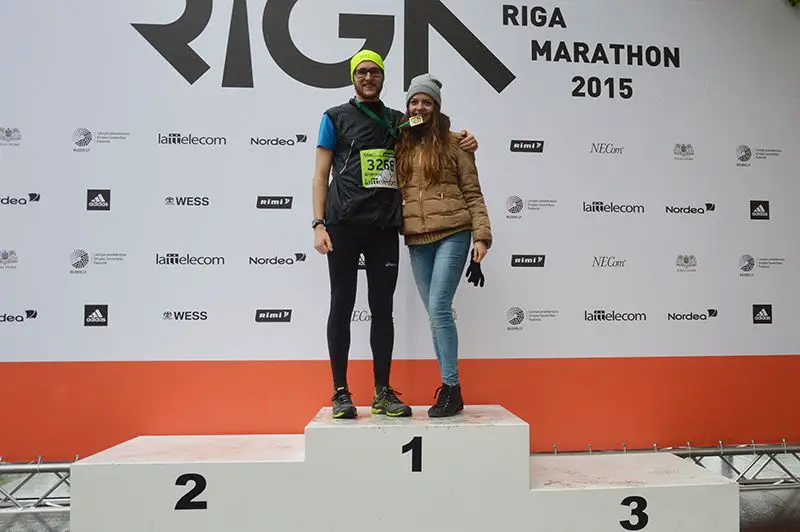
Compete with yourself
On a deeper level, I loved the mental aspect of it and the whole challenge of focusing on the goal – both during training and the race itself. And even though this wasn’t a marathon, I learned what the phase ‘life is a marathon’ meant. Distance running is indeed a great metaphor for life. When we have a challenge or an obstacle ahead of us we need to believe in our own ability, stay focused and find strength to continue even in times of uncertainty.
Kind of like climbing volcanoes – when you have no more energy all that remains is just to put one step in from of the other.
Training for Riga Half Marathon
I had just around 4 months to train for the race and no experience in designing running programs. So, what I did is I found a free training plan on Google and tried to adapt it for myself.
Even though I was not new to sports, endurance training turned out to be a big experiment on myself. Throughout the program I learned a lot about my body, run training and form, nutrition, recovery and much much more. It was like a personalized education, designed for me.
I copy the plan below for reference and also upload here for whoever wants to download it.
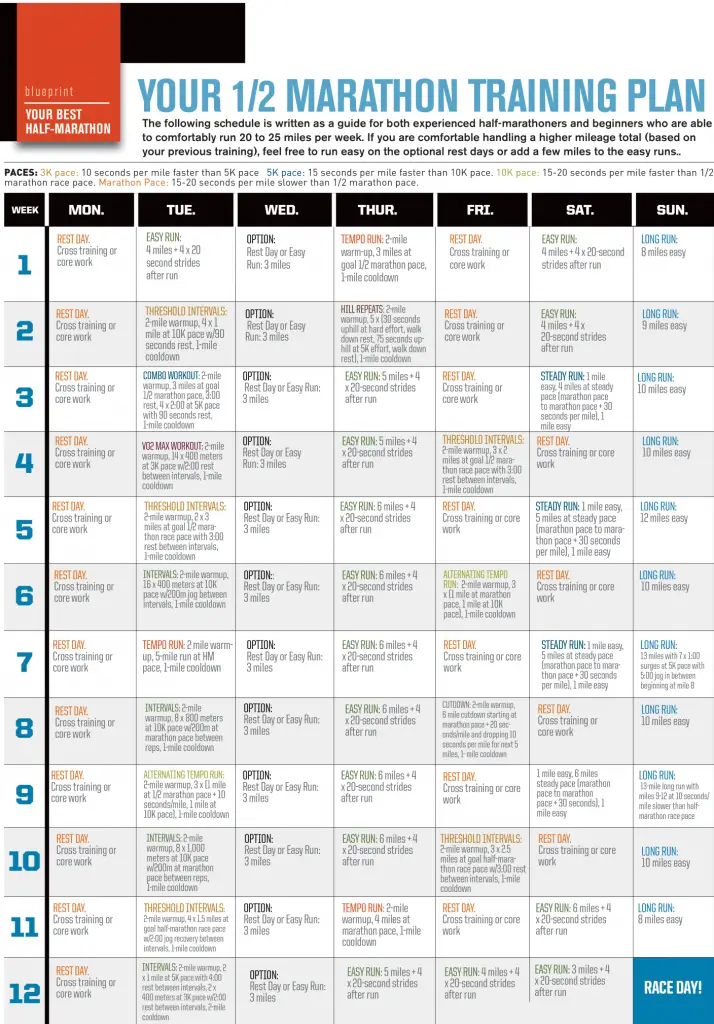
In the end, the program above worked really well. When I look back at it after running a few marathons, I see that the speedwork I did for Riga Half Marathon was very good. I’ll definitely replicate some part of it in my future training cycles.
Did you find this information useful? Share the post with others using the buttons below.
Have an opinion? Share via links below and tag @theathleteblog
Tags In
Andrejs Birjukovs
GET A FREE TRAINING PLAN
Subscribe to my email list and get access to a free 4-week “back in shape” training plan
You’ll also get two full-body strength sessions and some other goodies!
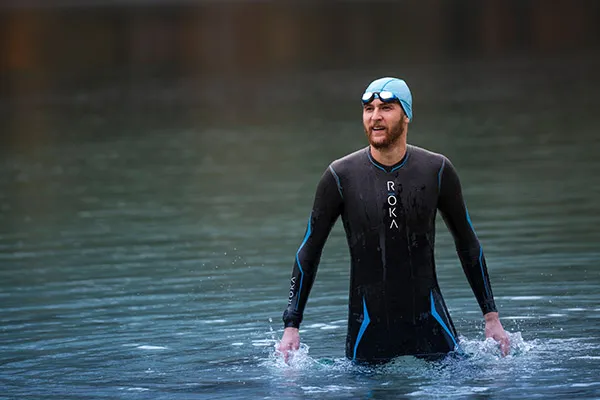
How did I get here?
Hey there! My name is Andrejs and I am here to inspire, entertain and get you fit for any adventure.
I went from being an over trained pro athlete to an endurance coach sharing how to listen to your body and live life to the fullest.
Traveling, new sports & activities brought new meaning to my training and made it much more effective, fun and enjoyable. And I'm here to help you do the same.
